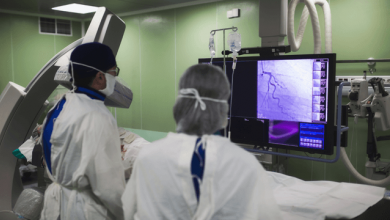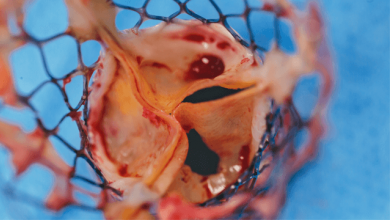Search results
Author(s):
Ashok Seth
,
Sajal Gupta
,
Vivudh Pratap Singh
,
et al
Added:
3 years ago
In 1995, stent implantation became the second revolution in interventional cardiology when Colombo et al. demonstrated that intravascular ultrasound (IVUS)-guided post-dilatation of stents to achieve optimal expansion and larger lumens led to reduced restenosis and stent thrombosis (ST).1 This ‘bigger is better’ hypothesis became the technical cornerstone of all stent implantation in the bare…
View more
Svelte Medical Systems
Supplier
Author(s):
Angela Hoye
,
Scot Garg
Added:
3 years ago
Coronary artery bifurcations are at an increased risk of the development of coronary atherosclerosis because of turbulent flow and low shear stress. Bifurcation lesions account for between 8% and 22% of all percutaneous coronary interventions (PCI) and have long posed a problem for interventional cardiologists.
Published data show bifurcation lesions treated using bare metal stents (BMS) have…
View more
Annular Rupture During TAVI
Author(s):
JJ Coughlan
,
Thomas J Kiernan
,
Darren Mylotte
,
et al
Added:
3 years ago
Article
Foreword
Author(s):
Renu Virmani
Added:
3 years ago
Article
Author(s):
Tim A Fischell
Added:
3 years ago
Coronary artery stenting has evolved substantially since the first use of coronary stenting as an adjunct to balloon angioplasty in the early 1990s. The performance (and particularly the deliverability) of coronary stents has improved such that coronary stenting is now the primary mode of revascularisation for percutaneous coronary interventions in more than 95% of cases.
Although stent delivery…
View more
Author(s):
Nicolas Foin
,
Eduardo Alegria-Barrero
,
Ryo Torii
,
et al
Added:
3 years ago
Drug-eluting stents (DESs) have contributed to a significant lowering of the incidence of restenosis and target vessel revascularisation (TVR) in bifurcations.1–4 A randomised study of bifurcation lesions using sirolimus-eluting stents revealed restenosis rates of only 4 % in the main branch (MB) and a TVR rate as low as 8.2 % at six-month follow-up,2 a marked improvement over that in historical…
View more
Platinum Chromium Stent Series
Author(s):
Dominic J Allocco
,
Mary V Jacoski
,
Barbara Huibregtse
,
et al
Added:
3 years ago
Article
Author(s):
John Rawlins
,
Jehangir Din
,
Suneel Talwar
,
et al
Added:
3 years ago
A bifurcation lesion within the coronary arterial circulation is defined as a stenosis occurring at, or adjacent to, a significant division of a major epicardial coronary artery.1 Bifurcation lesions account for 1–20% of all percutaneous coronary interventions (PCIs), and treatment remain technically challenging despite advances in PCI techniques and third-generation drug-eluting stent (DES)…
View more
Author(s):
Zach George
Added:
3 years ago












